|
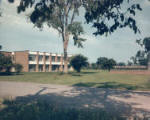 RKB roots:
R.K.B.
OPTO-ELECTRONICS, INCORPORATED (RKB) was founded back in the early
1950's in Ottawa, Canada by two instrumental visionaries Paul Nash and
John Harrison. The company was called Nash & Harrison, Ltd.
The company developed and patented many of the current online inspection
techniques still in use today. Their primary focus was on paper
sheeter applications where zero defect tolerance was a requirement of
the time. Since no other competitive technologies existed at that
time the company experienced sustainable growth of more than 25% per
year. Primary markets served were Canada and Europe. RKB roots:
R.K.B.
OPTO-ELECTRONICS, INCORPORATED (RKB) was founded back in the early
1950's in Ottawa, Canada by two instrumental visionaries Paul Nash and
John Harrison. The company was called Nash & Harrison, Ltd.
The company developed and patented many of the current online inspection
techniques still in use today. Their primary focus was on paper
sheeter applications where zero defect tolerance was a requirement of
the time. Since no other competitive technologies existed at that
time the company experienced sustainable growth of more than 25% per
year. Primary markets served were Canada and Europe.
By the late 1950's, the
company introduced newer state-of-the-art technologies using
phototransistor technology for the detection of
spot type defects such
as dirt, bugs, shives, oil, light spots and other common events that occurred during
the paper manufacturing process. They also introduced full
material web inspection for high-speed paper and coating machine processes.
I n 1955, the company hired a young
engineer from Scotland with significant background in electronic and optic vision designs as
their Design Engineer. Named William Dobbie, the company
realized significant technological advances in their machine vision
designs facilitating the development and introduction of newer more
reliable sensing technologies using transistor based sensors. n 1955, the company hired a young
engineer from Scotland with significant background in electronic and optic vision designs as
their Design Engineer. Named William Dobbie, the company
realized significant technological advances in their machine vision
designs facilitating the development and introduction of newer more
reliable sensing technologies using transistor based sensors.
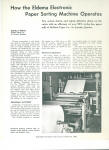 1960's: In 1960, the company installed one of its first
patented phototransistor based defect detection systems
at Guard Bridge Paper Co., United Kingdom. At the
time, this was an innovative design that no other
company offered. This technology facilitated the ability to detect
many more defects that commonly occurred during the
process of making web materials such as paper. 1960's: In 1960, the company installed one of its first
patented phototransistor based defect detection systems
at Guard Bridge Paper Co., United Kingdom. At the
time, this was an innovative design that no other
company offered. This technology facilitated the ability to detect
many more defects that commonly occurred during the
process of making web materials such as paper.
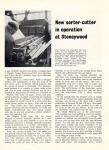 By
the mid 1960's, the company became the leading supplier of web
inspection solutions in Europe. At the same time, government backed subsidized programs and intellectual property
appropriation facilitated the introduction of various
competitive companies
that were in Finland, Sweden and Germany. Not with
standing the market becoming competitive, RKB had
installed hundreds of systems worldwide with its installation at
Wiggins Teape, Aberdeen, Scotland and Champion Papers, Hamilton,
OH (chromekote) making it the leader in on-line high speed
machine vision technology. The
late 1960's saw significant changes in the industry. The industry
saw competitors emerging such as Cutler Hammer, Sick Optic, ULMA
and some Asian manufacturers. At the same time, larger multinational
companies were looking to diversify into other industries they
felt would enhance current technologies they offered. One such
company was Leigh Controls Ltd. As a leading technology supplier
involved in aerospace and industrial applications, Leigh Controls
was considered a leader worldwide similar to the Siemens, Honeywell
and ABB of today. By
the mid 1960's, the company became the leading supplier of web
inspection solutions in Europe. At the same time, government backed subsidized programs and intellectual property
appropriation facilitated the introduction of various
competitive companies
that were in Finland, Sweden and Germany. Not with
standing the market becoming competitive, RKB had
installed hundreds of systems worldwide with its installation at
Wiggins Teape, Aberdeen, Scotland and Champion Papers, Hamilton,
OH (chromekote) making it the leader in on-line high speed
machine vision technology. The
late 1960's saw significant changes in the industry. The industry
saw competitors emerging such as Cutler Hammer, Sick Optic, ULMA
and some Asian manufacturers. At the same time, larger multinational
companies were looking to diversify into other industries they
felt would enhance current technologies they offered. One such
company was Leigh Controls Ltd. As a leading technology supplier
involved in aerospace and industrial applications, Leigh Controls
was considered a leader worldwide similar to the Siemens, Honeywell
and ABB of today.
Involved in
case packaging machinery, converting machinery and other associated
areas, Leigh Controls Ltd., considered implementation of inspection to
be a natural fit with their current technologies. While the
company experienced higher growth than in previous years, various
business decisions made by in-experienced management personnel
led to a critical mistake which was to pull of the European market.
At that time, Europe was the leading growth market for high-speed
on-line web inspection and quality control. This
decision was made in part on the analysis that the United States market
was ripe for extensive growth (US businesses did not invest in online
inspection at that time as they did not consider that technology a
necessity for long term growth). This decision later would hinder
growth for Leigh Controls and allow companies like ULMA and Sick Optic
to gain market share.
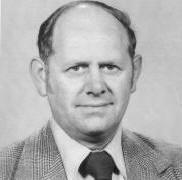 1970's:
In the early 1970's the
inspection division under the guidance of William Dobbie, designed and patented new technologies in the area of
ultraviolet hole detection and splice detection. With the
advent of inspection applications moving to paper and coating machinery, the need to
inspect on sheeters decreased. However, splicing out defects on
parent rolls of material created a new requirement for finishing departments to
resolve mill and butt type splices. As a result of 3 years of innovative design,
the company introduced the first splice detector sensor system using
capacitive technology as the sensing base. Within a one year, the
splice detection technology became the preferred unit used by Clark
Aiken, Beloit, Jagenberg, Bielomatik and Will to name a few. Over
the years, the company has become the preferred supplier of this type of
technology worldwide. While the technology has undergone
significant changes, basic concept has not changed allowing
this technology to be the longest running successful technology in the
history of online inspection. By 1976, financial considerations
and logistics required the company to revaluate its manufacturing base.
After 20+ years in 1970's:
In the early 1970's the
inspection division under the guidance of William Dobbie, designed and patented new technologies in the area of
ultraviolet hole detection and splice detection. With the
advent of inspection applications moving to paper and coating machinery, the need to
inspect on sheeters decreased. However, splicing out defects on
parent rolls of material created a new requirement for finishing departments to
resolve mill and butt type splices. As a result of 3 years of innovative design,
the company introduced the first splice detector sensor system using
capacitive technology as the sensing base. Within a one year, the
splice detection technology became the preferred unit used by Clark
Aiken, Beloit, Jagenberg, Bielomatik and Will to name a few. Over
the years, the company has become the preferred supplier of this type of
technology worldwide. While the technology has undergone
significant changes, basic concept has not changed allowing
this technology to be the longest running successful technology in the
history of online inspection. By 1976, financial considerations
and logistics required the company to revaluate its manufacturing base.
After 20+ years in
Ottawa, Canada the
decision was made to move across the border to the United States.
This would provide better logistics and purchasing power allowing for
significant reduction in manufacturing costs and improve profitability.
After careful consideration of various locations, the company located to
Syracuse, New York which at that time was a hub for serious industrial
manufacturing with companies like Carrier Corp, GE, and GM to name a
few.
1979 was a year that saw
significant gains in machine vision technology. The company had
completed and patented the first camera-based vision system used for
online web inspection. Designed for film processing lines, the new
camera system provided detection capabilities far beyond typical
photomultiplier, laser or phototransistor technologies. However,
it would not be until 1986 and the invention of
CCD technology that
other suppliers would catch onto the successful use of camera technology
as a sensing platform. By then, RKB had over 8 years experience in
filtering techniques specific to camera-based technology allowing RKB to
provide a more stable and reliable unit overall.
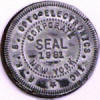 1980's:
1980 was the year that the
company became officially known as R.K.B.
OPTO-ELECTRONICS, INC. In October of that year,
William Dobbie acquired the Industrial Process
Automation Division of Leigh Controls and renamed the
company RKB as it is most widely known today.
With new insight and direction, the company became the
premier supplier to Crane & Co., Inc. manufacturers of
the United States Currency. Within 7 years, RKB
would introduce high speed CCD based inspection
technologies using all forms of camera sensors unlike
competitive companies, many of which are no longer
around. Of course, by the late 1980's, the CCD
development facilitated the introduction of many smaller
companies all bidding for piece of the market, some
successful, many were not. 1980's:
1980 was the year that the
company became officially known as R.K.B.
OPTO-ELECTRONICS, INC. In October of that year,
William Dobbie acquired the Industrial Process
Automation Division of Leigh Controls and renamed the
company RKB as it is most widely known today.
With new insight and direction, the company became the
premier supplier to Crane & Co., Inc. manufacturers of
the United States Currency. Within 7 years, RKB
would introduce high speed CCD based inspection
technologies using all forms of camera sensors unlike
competitive companies, many of which are no longer
around. Of course, by the late 1980's, the CCD
development facilitated the introduction of many smaller
companies all bidding for piece of the market, some
successful, many were not.
   1990's:
In 1992, William Dobbie
again designed an innovative technology for the detection of coating
streaks. Unequaled in performance by any other competitive
solution, even today, this technology allows RKB customers the ability
to detect coating streaks and scratches that have long plagued coating
material manufactures. With the ability to detect streaks as small
as 1 micron, this patented and innovative solution truly presented a
quantum leap in inspection technology. RKB successfully introduced its new
streak detection technology to
Europe. So successful was this installation, that the mills
technical manager to date has not seen a unit that can compare in
reliability and accuracy. By 1997, RKB has gone back to the
drawing board so to speak and developed specialized technology for the
detection of similar defects for magnetic media which was is an
important media now preferred by consumers and business alike as the media
of choice in everyday use. 1990's:
In 1992, William Dobbie
again designed an innovative technology for the detection of coating
streaks. Unequaled in performance by any other competitive
solution, even today, this technology allows RKB customers the ability
to detect coating streaks and scratches that have long plagued coating
material manufactures. With the ability to detect streaks as small
as 1 micron, this patented and innovative solution truly presented a
quantum leap in inspection technology. RKB successfully introduced its new
streak detection technology to
Europe. So successful was this installation, that the mills
technical manager to date has not seen a unit that can compare in
reliability and accuracy. By 1997, RKB has gone back to the
drawing board so to speak and developed specialized technology for the
detection of similar defects for magnetic media which was is an
important media now preferred by consumers and business alike as the media
of choice in everyday use.
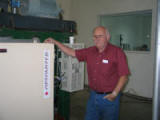 2000's:
September
of 2003, RKB successfully installed its machine vision technology in the
growing Asian market where quality control is becoming a staple
requirement for web based material manufacturers quality
initiatives. One of the systems installed was the companies
patented coating streak and scratch detection technology. As a result of
this installation and the growth rates estimated in Asia, RKB decided to
open up a base of operations to service its customers in Asia, Southeast
Asia, Australia and New Zealand. Located in the heart of papermaking
Jiangsu province, China, RKB ASIA has put forth significant effort to
establish itself as a leading supplier with installations at many
premier papermakers throughout Asia, Southeast Asia and Australia. 2000's:
September
of 2003, RKB successfully installed its machine vision technology in the
growing Asian market where quality control is becoming a staple
requirement for web based material manufacturers quality
initiatives. One of the systems installed was the companies
patented coating streak and scratch detection technology. As a result of
this installation and the growth rates estimated in Asia, RKB decided to
open up a base of operations to service its customers in Asia, Southeast
Asia, Australia and New Zealand. Located in the heart of papermaking
Jiangsu province, China, RKB ASIA has put forth significant effort to
establish itself as a leading supplier with installations at many
premier papermakers throughout Asia, Southeast Asia and Australia.
[ Top of Page ] |



 RKB roots:
R.K.B.
OPTO-ELECTRONICS, INCORPORATED (RKB) was founded back in the early
1950's in Ottawa, Canada by two instrumental visionaries Paul Nash and
John Harrison. The company was called Nash & Harrison, Ltd.
The company developed and patented many of the current online inspection
techniques still in use today. Their primary focus was on paper
sheeter applications where zero defect tolerance was a requirement of
the time. Since no other competitive technologies existed at that
time the company experienced sustainable growth of more than 25% per
year. Primary markets served were Canada and Europe.
RKB roots:
R.K.B.
OPTO-ELECTRONICS, INCORPORATED (RKB) was founded back in the early
1950's in Ottawa, Canada by two instrumental visionaries Paul Nash and
John Harrison. The company was called Nash & Harrison, Ltd.
The company developed and patented many of the current online inspection
techniques still in use today. Their primary focus was on paper
sheeter applications where zero defect tolerance was a requirement of
the time. Since no other competitive technologies existed at that
time the company experienced sustainable growth of more than 25% per
year. Primary markets served were Canada and Europe.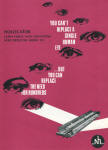
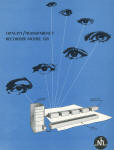
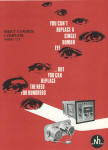
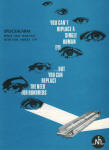
 n 1955, the company hired a young
engineer from Scotland with significant background in electronic and optic vision designs as
their Design Engineer. Named William Dobbie, the company
realized significant technological advances in their machine vision
designs facilitating the development and introduction of newer more
reliable sensing technologies using transistor based sensors.
n 1955, the company hired a young
engineer from Scotland with significant background in electronic and optic vision designs as
their Design Engineer. Named William Dobbie, the company
realized significant technological advances in their machine vision
designs facilitating the development and introduction of newer more
reliable sensing technologies using transistor based sensors. 1960's: In 1960, the company installed one of its first
patented phototransistor based defect detection systems
at Guard Bridge Paper Co., United Kingdom. At the
time, this was an innovative design that no other
company offered. This technology facilitated the ability to detect
many more defects that commonly occurred during the
process of making web materials such as paper.
1960's: In 1960, the company installed one of its first
patented phototransistor based defect detection systems
at Guard Bridge Paper Co., United Kingdom. At the
time, this was an innovative design that no other
company offered. This technology facilitated the ability to detect
many more defects that commonly occurred during the
process of making web materials such as paper.
 By
the mid 1960's, the company became the leading supplier of web
inspection solutions in Europe. At the same time, government backed subsidized programs and intellectual property
appropriation facilitated the introduction of various
competitive companies
that were in Finland, Sweden and Germany. Not with
standing the market becoming competitive, RKB had
installed hundreds of systems worldwide with its installation at
Wiggins Teape, Aberdeen, Scotland and Champion Papers, Hamilton,
OH (chromekote) making it the leader in on-line high speed
machine vision technology. The
late 1960's saw significant changes in the industry. The industry
saw competitors emerging such as Cutler Hammer, Sick Optic, ULMA
and some Asian manufacturers. At the same time, larger multinational
companies were looking to diversify into other industries they
felt would enhance current technologies they offered. One such
company was Leigh Controls Ltd. As a leading technology supplier
involved in aerospace and industrial applications, Leigh Controls
was considered a leader worldwide similar to the Siemens, Honeywell
and ABB of today.
By
the mid 1960's, the company became the leading supplier of web
inspection solutions in Europe. At the same time, government backed subsidized programs and intellectual property
appropriation facilitated the introduction of various
competitive companies
that were in Finland, Sweden and Germany. Not with
standing the market becoming competitive, RKB had
installed hundreds of systems worldwide with its installation at
Wiggins Teape, Aberdeen, Scotland and Champion Papers, Hamilton,
OH (chromekote) making it the leader in on-line high speed
machine vision technology. The
late 1960's saw significant changes in the industry. The industry
saw competitors emerging such as Cutler Hammer, Sick Optic, ULMA
and some Asian manufacturers. At the same time, larger multinational
companies were looking to diversify into other industries they
felt would enhance current technologies they offered. One such
company was Leigh Controls Ltd. As a leading technology supplier
involved in aerospace and industrial applications, Leigh Controls
was considered a leader worldwide similar to the Siemens, Honeywell
and ABB of today.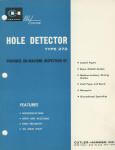
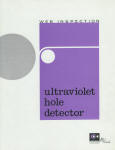
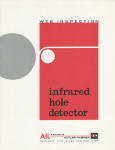
 1970's:
In the early 1970's the
inspection division under the guidance of William Dobbie, designed and patented new technologies in the area of
1970's:
In the early 1970's the
inspection division under the guidance of William Dobbie, designed and patented new technologies in the area of
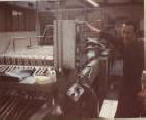
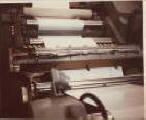
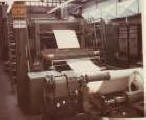
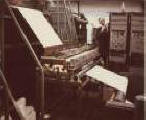
 1980's:
1980 was the year that the
company became officially known as R.K.B.
OPTO-ELECTRONICS, INC. In October of that year,
William Dobbie acquired the Industrial Process
Automation Division of Leigh Controls and renamed the
company RKB as it is most widely known today.
With new insight and direction, the company became the
premier supplier to Crane & Co., Inc. manufacturers of
the United States Currency. Within 7 years, RKB
would introduce
1980's:
1980 was the year that the
company became officially known as R.K.B.
OPTO-ELECTRONICS, INC. In October of that year,
William Dobbie acquired the Industrial Process
Automation Division of Leigh Controls and renamed the
company RKB as it is most widely known today.
With new insight and direction, the company became the
premier supplier to Crane & Co., Inc. manufacturers of
the United States Currency. Within 7 years, RKB
would introduce 

 1990's:
In 1992, William Dobbie
again designed an innovative technology for the detection of coating
streaks. Unequaled in performance by any other competitive
solution, even today, this technology allows RKB customers the ability
to detect coating streaks and scratches that have long plagued coating
material manufactures. With the ability to detect streaks as small
as 1 micron, this patented and innovative solution truly presented a
quantum leap in inspection technology. RKB successfully introduced its new
1990's:
In 1992, William Dobbie
again designed an innovative technology for the detection of coating
streaks. Unequaled in performance by any other competitive
solution, even today, this technology allows RKB customers the ability
to detect coating streaks and scratches that have long plagued coating
material manufactures. With the ability to detect streaks as small
as 1 micron, this patented and innovative solution truly presented a
quantum leap in inspection technology. RKB successfully introduced its new
 2000's:
September
of 2003, RKB successfully installed its machine vision technology in the
growing Asian market where quality control is becoming a staple
requirement for web based material manufacturers quality
initiatives. One of the systems installed was the companies
patented coating streak and scratch detection technology. As a result of
this installation and the growth rates estimated in Asia, RKB decided to
open up a base of operations to service its customers in Asia, Southeast
Asia, Australia and New Zealand. Located in the heart of papermaking
Jiangsu province, China, RKB ASIA has put forth significant effort to
establish itself as a leading supplier with installations at many
premier papermakers throughout Asia, Southeast Asia and Australia.
2000's:
September
of 2003, RKB successfully installed its machine vision technology in the
growing Asian market where quality control is becoming a staple
requirement for web based material manufacturers quality
initiatives. One of the systems installed was the companies
patented coating streak and scratch detection technology. As a result of
this installation and the growth rates estimated in Asia, RKB decided to
open up a base of operations to service its customers in Asia, Southeast
Asia, Australia and New Zealand. Located in the heart of papermaking
Jiangsu province, China, RKB ASIA has put forth significant effort to
establish itself as a leading supplier with installations at many
premier papermakers throughout Asia, Southeast Asia and Australia.